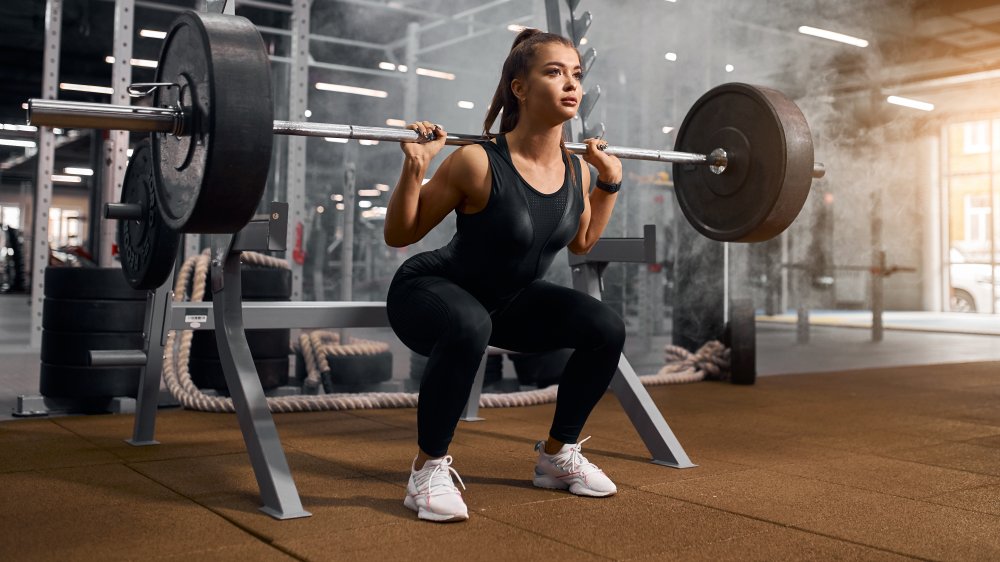This Is Why Your Back Always Hurts After Doing Squats
A simple squat is a foundational movement that is key to getting fitter and stronger, but sometimes, squatting can lead to an aching back long after you've racked your weights and left the gym. Back pain from squats can have several causes, including overloading your barbell with too much weight, squatting with improper form, and not giving your body enough time to rest between workouts.
It's important to stop your squat if your back starts hurting while you're lifting, but if your back is simply feeling sore after your workout, try adjusting your form. If you've been squatting with weights, go back to basics and focus on your bodyweight squat form, Certified Strength and Conditioning Specialist Noam Tamir told SELF. Start with engaging your core as you squat down. "Having more awareness and attention to detail to getting and maintaining full-body tension (abs on, upper back tightness, even foot placement and pressure) will go a long way in making the squat feel better," Certified Strength and Conditioning Specialist Tony Gentilcore told Men's Health. As you lower, ensure that your knees are tracking out, not in (Harvard Health Publishing).
If you're not sure you're squatting correctly, the American Council on Exercise (ACE) recommends having a personal trainer help assess your form. A few tweaks could be the difference between your back being stiff or feeling great the day after a workout. Once you're squatting without pain, you can gradually increase the weight you're using.
There isn't one single way to squat
You may be used to one specific way to squat, but ACE recommends finding a squat width and toe position that feels comfortable for you. Don't feel the need to squat exactly like the person using the rack next to yours: You may find that having your toes facing slightly farther out to each side and a wider stance leads to more comfort and less pressure on your lower back.
There are also many styles of squatting and some cause more pressure on your spine. A back squat, where a weighted bar is resting between your shoulder blades, "is one of the most dangerous exercises for your low back, hips, and knees, even when done with perfect form," chiropractor Lindsay Wey told Breaking Muscle. She recommends swapping that weight on your back for a lighter weight in a front squat for the same muscular gains with less chance of back strain. A goblet squat holding a dumbbell, kettlebell, or a medicine ball in front of you is less likely to cause pain and is a great way to focus on proper form (Verywell Fit).
And as with any exercise, it's important to allow your body plenty of time to rest and recover between workouts. Don't expect to squat with heavy weights everyday if you want to avoid soreness: Give yourself at least one to two days to recover between sessions. According to Livestrong, strength training twice a week is plenty.


